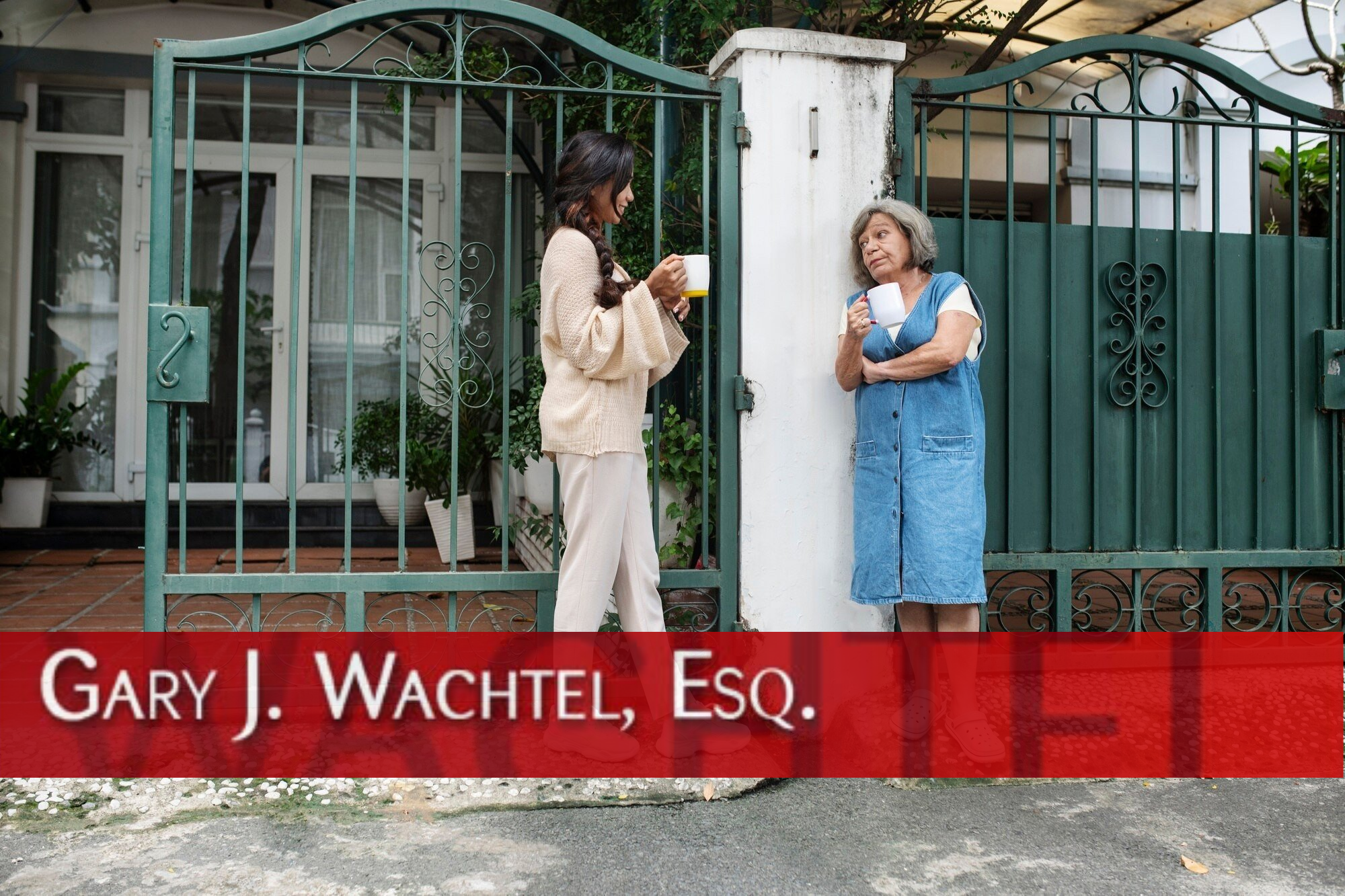Understanding the Legal Framework for Property Boundary Disputes in New York
Property line disputes are among the most persistent challenges in real estate, particularly in dense urban environments like New York City. Whether between residential landowners or commercial entities, boundary disagreements can escalate quickly affecting property values, development plans, and tenant relations.
These disputes often stem from years of ambiguous land use, legacy property descriptions, or physical encroachments that were never challenged. In many cases, the conflict surfaces only when a new transaction, construction project, or ownership change occurs prompting one party to investigate the actual dimensions and legal status of the property in question. Commercial property owners, in particular, face heightened risks due to the high cost of development delays and the complexity of lease arrangements, shared infrastructure, and zoning overlays.
Navigating these disputes requires more than just surveying expertise or familiarity with a deed. It calls for an integrated legal approach that considers statutory rights, case law precedent, and the specific nuances of New York’s property and zoning regulations. From preliminary investigations to courtroom litigation, resolving a property line conflict demands legal precision and strategic insight particularly in a city where even a few inches of encroachment can hold substantial financial consequences. A property attorney near me plays a critical role in safeguarding rights, interpreting property records, and advocating for resolution within the city’s complex legal framework.
Common Causes of Property Line Disputes
Property line disputes can arise from a variety of factors, but most share a common thread: confusion or disagreement over the actual physical or legal extent of a parcel. These disputes are particularly common in urban environments where land is scarce, buildings are tightly packed, and overlapping use of space is frequent. Understanding the most common triggers can help stakeholders recognize potential issues before they escalate.
Encroachments and Overlapping Use
One of the leading causes of boundary conflicts is physical encroachment. This includes fences, retaining walls, signage, driveways, and even underground elements like sewer or water lines that cross into a neighboring property. In commercial zones, rooftop installations, HVAC systems, or rear loading docks can create similar disputes. Encroachments may be accidental or intentional, but even unintentional overreach can have legal consequences.
When these structures are discovered often during development, sale, or inspection parties may disagree on who has the right to the encroached space. Left unresolved, such disputes can delay construction timelines, hinder refinancing, or lead to lawsuits requiring injunctive relief or damages.
Misinterpreted Deeds or Surveys
Another frequent source of conflict stems from the interpretation of legal descriptions in deeds and historical property surveys. Property descriptions that use outdated references (e.g., “from the old oak tree to the riverbed”) or metes and bounds can lead to confusion. When a newer survey contradicts what one party believed to be the boundary for years, tensions rise quickly.
Surveys conducted without reviewing historical chain-of-title documents can also miss easements or covenants that affect property boundaries. When multiple parties rely on different surveys, resolving disputes becomes even more challenging.
Adverse Possession Claims
In some cases, one party may claim ownership over part of the adjoining land through adverse possession. In New York, this doctrine requires the claimant to demonstrate that their use of the property was hostile, open, notorious, exclusive, and continuous for at least 10 years. For example, if a commercial entity has used a strip of land as a driveway for a decade, they may claim ownership through adverse possession.
These cases are fact-intensive and require precise legal and evidentiary analysis. A property attorney near me can help evaluate whether adverse possession applies or whether defenses such as permissive use may negate the claim.
Ambiguous Easements or Rights of Way
Easements for access or utilities that are poorly defined or poorly recorded can also trigger disputes. If one business uses a shared alley for deliveries and another wants to develop that space, litigation may result. These disputes are particularly common in older neighborhoods where informal arrangements have persisted without formal documentation.
Understanding the root causes of property line disputes is essential for resolving them efficiently. Legal counsel is often the first line of defense against prolonged conflict and costly delays.

Steps to Legally Handle a Boundary Dispute
1. Review Property Deeds and Historical Records
The first step in any boundary dispute is to examine the legal documents defining the property lines. This includes reviewing the most recent deed, prior deeds in the chain of title, and any easement agreements.
Commercial property professionals are advised to commission a title company to conduct a thorough review. In many cases, errors or gaps in previous legal descriptions can be identified and clarified at this stage.
2. Commission a Licensed Surveyor
A current, professional land survey is essential to resolve most property line issues. Surveyors use advanced measurement tools to determine precise legal boundaries, taking into account public records, topographical data, and historical plats.
In situations where disputes remain despite survey confirmation, legal intervention may be necessary. A property attorney near me can interpret these findings in the context of local zoning codes and real estate law, ensuring that your position is both factual and legally defensible.
3. Attempt Private Negotiation or Mediation
Litigation is not always the first or most productive step. Many property line disputes especially between long-time neighbors or commercial tenants can be resolved amicably through negotiation or structured mediation.
Under guidance from legal counsel, both parties may be able to reach a mutual agreement to modify structures, reassign land use, or adjust leases. Mediation is a cost-effective alternative that preserves relationships while avoiding the complexity of court proceedings.
The U.S. Small Business Administration’s leasing guidance provides additional best practices for resolving landlord-tenant disputes over shared or ambiguous property use, especially for small businesses.
4. Issue a Formal Demand Letter
If informal negotiations fail, the next legal step is to have a qualified attorney issue a formal demand letter. This document outlines the legal basis for the claim, cites supporting documentation (such as a survey), and proposes a resolution timeline.
A well-crafted demand letter can often prompt compliance or compromise without resorting to litigation. In the context of commercial real estate, it also serves to establish a paper trail that will be critical if the matter proceeds to court.
Working with a property attorney near me ensures that the language of the letter is legally precise and tailored to New York’s real estate laws and enforcement standards.
5. Initiate Litigation When Necessary
When all other avenues are exhausted, litigation may be required to resolve a property boundary dispute. This process typically involves filing a claim in the appropriate New York court, presenting evidence (such as surveys and historical records), and seeking injunctive relief or damages.
Litigation may also involve the court appointing a neutral surveyor or commissioner to examine the disputed area. For commercial clients, litigation strategies often include pursuing specific performance or quiet title actions.
The Cornell Legal Information Institute provides an accessible overview of property law principles that apply broadly across jurisdictions, including boundary determinations and easement enforcement.
Legal Theories Commonly Involved in Property Line Litigation
When property line disputes escalate beyond negotiation or mediation, parties typically rely on well-established legal theories to assert or defend their rights. These doctrines grounded in state law and precedent shape how courts evaluate claims of ownership, use, and access. Understanding these legal frameworks is essential for any party involved in a boundary dispute.
Easements by Prescription
A prescriptive easement allows a person to gain the legal right to use another’s property after a long period of continuous, open, and hostile use. While it does not transfer ownership, it grants the right to continued use of a specific part of the land, such as a path or alley.
In New York, prescriptive easements must meet strict criteria. The user must prove that their use of the land was:
- Open and notorious (not secretive)
- Continuous and uninterrupted for at least 10 years
- Hostile (without permission)
- Exclusive to the user
These cases require documentary evidence, testimony, and sometimes expert analysis. A property attorney near me can help build or counter these claims effectively.
Boundary by Acquiescence
Courts sometimes uphold a boundary line that neighbors have treated as legitimate for many years even if it does not match the legal property description. If both parties have, through words or conduct, acknowledged a physical boundary (like a fence or hedge) as the true division line, a court may rule that boundary as binding.
This doctrine promotes stability and respects the expectations of both parties, especially when reliance on the apparent boundary has influenced development or investment decisions.
Adverse Possession
As noted earlier, adverse possession allows someone to claim legal title to land they’ve used exclusively for a statutory period. Unlike prescriptive easements, adverse possession may result in full ownership transfer. In New York, claimants must demonstrate:
- Hostile possession without the owner’s consent
- Actual possession that is exclusive and uninterrupted
- Open and notorious occupation
- Continuous use for 10 years
Claims involving adverse possession often hinge on the presence of structures, improvements, or clear demarcations like fences. A property attorney near me can advise property owners on whether they’re at risk of losing title or have grounds to assert a claim.
Quiet Title Actions
A quiet title action seeks a court judgment to settle a dispute over property ownership. This is often used when there are competing claims or confusion over who holds legal title to a boundary area. Quiet title actions are especially useful in commercial real estate where clear title is required before refinancing, leasing, or redevelopment.
These cases may involve multiple legal theories, including adverse possession, mistaken boundary assumptions, or chain-of-title issues. Filing a quiet title action is a proactive way to resolve ambiguity and prevent future litigation.
For a general overview of these legal theories, the Cornell Legal Information Institute provides summaries of property doctrines applicable across U.S. jurisdictions.
How Commercial Properties in NYC Are Uniquely Affected
Boundary disputes can be disruptive in any setting, but they are particularly complex and costly in New York City’s commercial real estate environment. Due to the city’s density, layered zoning rules, and high-value development pressures, even small discrepancies in property lines can delay projects or trigger litigation.
Irregular Lot Shapes and Historical Inconsistencies
Many commercial properties in New York were built decades or even centuries ago. Lot lines may have been drawn when modern surveying tools were unavailable, resulting in parcels with irregular shapes or unclear boundaries. Over time, development around these lots may not have respected original boundaries, setting the stage for overlapping foundations, shared walls, or out-of-place fences.
Disputes often emerge when new owners commission updated surveys, or when renovations and redevelopment plans conflict with what neighbors believe to be shared or private space.
Shared Structures and Vertical Boundaries
New York’s vertical density also creates unique boundary issues. Rooftops, party walls, elevator shafts, and basements are often shared between multiple units, tenants, or buildings. Determining who owns or has usage rights to these spaces becomes a key issue in both leasing and property sale negotiations.
Shared structures can lead to complex litigation over maintenance responsibilities, insurance liabilities, and the right to make alterations. For legal clarity, parties typically consult with a property attorney near me to draft or interpret co-ownership and easement agreements.
Zoning and Landmark Restrictions
Properties in NYC may be subject to landmark preservation rules or zoning overlays that affect boundary-related construction. Disputes can arise when development plans violate setbacks or when property lines must be verified to determine compliance with zoning codes.
The New York City Department of Buildings offers resources such as zoning maps and property profile data that can help determine how disputes intersect with regulatory obligations.
High-Impact Financial Consequences
For commercial owners, even a minor boundary dispute can have major financial implications. Project delays, lost leasing opportunities, and impaired title can affect revenue streams and property valuations. In cases involving adverse possession or quiet title, owners may lose access to valuable square footage they believed they controlled.
The complexity of NYC property law requires a legal strategy that incorporates zoning, contract law, and real estate litigation. Legal guidance from professionals listed on Gary Wachtel’s homepage helps protect commercial assets and move transactions forward.
Preventative Legal Strategies for Commercial Owners
The most effective way to handle property line disputes is to prevent them from occurring in the first place. For commercial property owners, developers, and landlords in New York, proactive legal strategies can help minimize the risk of boundary-related conflicts.

Commission Accurate and Updated Surveys
Before purchasing or developing property, stakeholders should obtain a current boundary survey from a licensed professional. The survey should be comprehensive, incorporating existing structures, easements, and any irregularities in lot lines. Discrepancies between historical deeds and present-day surveys should be flagged for legal review.
Surveys also help ensure compliance with zoning regulations, which may require setback distances or restrict building over certain areas. When issues arise, a property attorney near me can help interpret the legal impact and suggest remediation.
Title Insurance with Boundary Endorsements
Standard title insurance policies often exclude boundary issues unless specifically endorsed. Commercial buyers should consider obtaining enhanced policies that include boundary line coverage. These endorsements can provide financial protection in the event of future disputes, including legal fees and potential loss of land use.
Title insurers typically require a clean survey and clear documentation. Working with experienced counsel during the acquisition phase ensures these conditions are met.
Draft Precise Legal Descriptions in Agreements
All lease, sale, and development agreements should contain clear legal descriptions based on current survey data. Ambiguous or outdated language creates future risk. If the transaction involves shared walls, easements, or air rights, these should be explicitly addressed with maps and diagrams where applicable.
Legal professionals found on Gary Wachtel’s homepage are often engaged to draft these provisions and to anticipate potential disputes that could arise from vague or conflicting documentation.
Create Boundary Line Agreements When Needed
In some cases, neighbors may be willing to sign a formal boundary line agreement that reflects their mutual understanding of where the line lies, even if it differs slightly from the deed. These agreements are legally binding when recorded and can protect both parties from future claims.
Such agreements are especially valuable in neighborhoods with overlapping use or shared access points common conditions in commercial corridors.
Monitor Adjoining Use Over Time
Finally, commercial property owners should actively monitor adjoining properties for signs of encroachment or adverse use. Regular inspections, periodic surveys, and maintaining clear fences or demarcations can help prevent a neighbor from later claiming a legal right based on open and continuous use.
When concerns arise, early intervention backed by legal advice is key to preserving ownership rights and avoiding protracted litigation.





